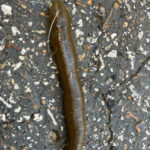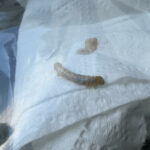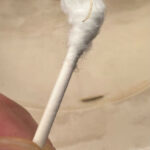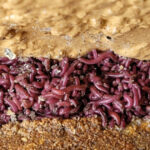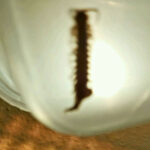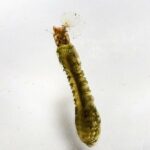There are many different types of green worms, but some of the most common types of green worms feed on, what else? Broccoli! Cabbage worms, cabbage loopers, and diamondback worms are all green in color, but vary in richness. The cabbage worm is bright green and it is the larvae of the white butterfly. Cabbage loopers are light green and they are the larvae of the brown moth. Diamondback worms are pale green and they are the larvae of the unique gray moth. The gray moth has a diamond shape on its back.
Broccoli worms don’t just feed on broccoli. They feed on Brussels sprouts, kale, cabbage, and cauliflower. Unfortunately, these worms can do some serious damage to plants and crops. In the case of the cabbage worm, the white butterfly lays its eggs on the undersides of leaves. When the eggs hatch, they feed on plants until there’s nothing left.
There are ways to prevent these types of worms such as using row covers during spring, summer, and when these pests are most prevalent; placing the heads of the plants in a nylon stocking until its ready for harvesting, or you can use sprats of insecticidal soaps. You can also prevent their numbers from increasing through early detection. Inspect your plants everyday to check for signs of brown or gray moths and white butterflies as well as the eggs, and worms.
You can get rid of green worms in your vegetables and plants by using Bacillus Thuringiensis (BT). BT is a bacterium that kills pests, but it won’t harm your plants. You can purchase BT at most plant stores, hardware stores, and garden centers.
Other Green Worms
As stated earlier, there are many different types of green worms – possibly thousands, and many of these “worms” are not worms at all. They are caterpillars. Just a few common green worms (caterpillars) include the larvae of the polyphemus moth, the luna moth, promethea moth, green-striped mapleworm, sweetbay silkmoth, cecropia moth, hickery horned devil, and the Io moth. These insects are commonly found in northeastern parts of the U.S.
All About Worms is always free, always reader-supported. Your tips via CashApp, Venmo, or Paypal are appreciated! Receipts will come from ISIPP Publishing.



